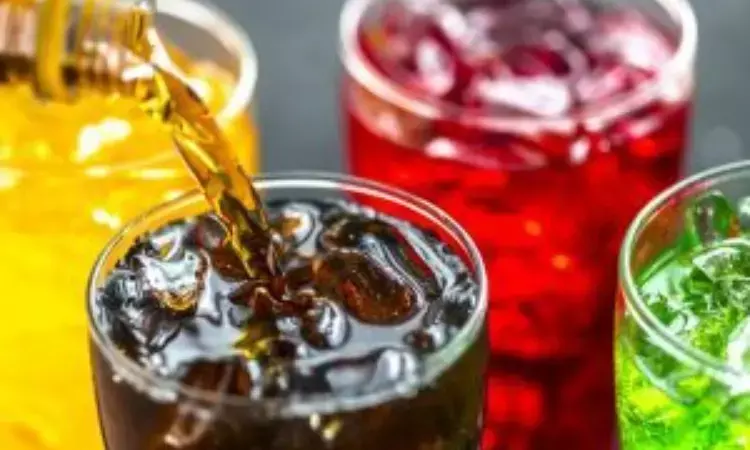- Home
- Medical news & Guidelines
- Anesthesiology
- Cardiology and CTVS
- Critical Care
- Dentistry
- Dermatology
- Diabetes and Endocrinology
- ENT
- Gastroenterology
- Medicine
- Nephrology
- Neurology
- Obstretics-Gynaecology
- Oncology
- Ophthalmology
- Orthopaedics
- Pediatrics-Neonatology
- Psychiatry
- Pulmonology
- Radiology
- Surgery
- Urology
- Laboratory Medicine
- Diet
- Nursing
- Paramedical
- Physiotherapy
- Health news
- Fact Check
- Bone Health Fact Check
- Brain Health Fact Check
- Cancer Related Fact Check
- Child Care Fact Check
- Dental and oral health fact check
- Diabetes and metabolic health fact check
- Diet and Nutrition Fact Check
- Eye and ENT Care Fact Check
- Fitness fact check
- Gut health fact check
- Heart health fact check
- Kidney health fact check
- Medical education fact check
- Men's health fact check
- Respiratory fact check
- Skin and hair care fact check
- Vaccine and Immunization fact check
- Women's health fact check
- AYUSH
- State News
- Andaman and Nicobar Islands
- Andhra Pradesh
- Arunachal Pradesh
- Assam
- Bihar
- Chandigarh
- Chattisgarh
- Dadra and Nagar Haveli
- Daman and Diu
- Delhi
- Goa
- Gujarat
- Haryana
- Himachal Pradesh
- Jammu & Kashmir
- Jharkhand
- Karnataka
- Kerala
- Ladakh
- Lakshadweep
- Madhya Pradesh
- Maharashtra
- Manipur
- Meghalaya
- Mizoram
- Nagaland
- Odisha
- Puducherry
- Punjab
- Rajasthan
- Sikkim
- Tamil Nadu
- Telangana
- Tripura
- Uttar Pradesh
- Uttrakhand
- West Bengal
- Medical Education
- Industry
High consumption of sugary drinks ups risk of cardiometabolic disease: Study

USA: People who consume high amount of sugar-sweetened beverages (sodas and fruit drinks) may be at higher cardiometabolic risk, says a recent study published in The Journal of Nutrition.
The study stated that higher consumption of sugar-sweetened beverages (SSB) was associated with emerging features of dyslipidemia that have been tied to higher cardiometabolic risk.
Prospective cohort studies have reported a relation between the consumption of sugar-sweetened beverage and dyslipidemia. There is not much evidence linking the consumption of SSB to emerging dyslipidemia features, which can be characterized by variation in lipoprotein particle size, remnant-like particle (RLP), and apolipoprotein concentrations.
Against the above background, Danielle E Haslam, Brigham and Women's Hospital, Boston, Massachusetts, USA, and colleagues aimed to investigate the association between SSB consumption and plasma lipoprotein cholesterol, apolipoprotein, and lipoprotein particle size concentrations among US adults.
For this purpose, the researchers examined participants from the Framingham Offspring Study (FOS) (1987-1995; n = 3047) and the Women's Health Study (1992; n = 26,218). They quantified plasma LDL-C, apolipoprotein (apo) B, HDL-C, apoA1, triglyceride (TG), non-HDL-C, total: HDL-cholesterol ratio, and apoB: apoA1 concentrations in both the cohorts. apoE, apoC3, RLP-TG, and RLP-cholesterol concentrations were quantified in FOS only.
Calculation of lipoprotein sizes was done from NMR signals for lipoprotein particle subclass concentrations (triglyceride-rich lipoprotein particles [TRL-P; very large, large, medium, small, and very small], HDL-particles [HDL-P; large, medium, and small]), and LDL-particles [LDL-P; large, medium, and small]. Food frequency questionnaire data estimated SSB consumption.
The study led to the following findings:
- SSB consumption was positively associated with LDL-C, apoB, TG, RLP-TG, RLP-C, non-HDL-C concentrations and total: HDL cholesterol and apoB: apoA1 ratio, and negatively associated with HDL-C and apoA1 concentrations.
- After adjustment for traditional lipoprotein risk factors, SSB consumers had smaller LDL-P and HDL-P sizes, lower concentrations of large LDL-P and medium HDL-P, and higher concentrations of small LDL-P, small HDL-P, and large TRL-P.
The researchers conclude, "higher SSB consumption was associated with multiple emerging features of dyslipidemia that have been linked to higher cardiometabolic risk in US adults."
Reference:
Danielle E Haslam, Daniel I Chasman, Gina M Peloso, Mark A Herman, Josée Dupuis, Alice H Lichtenstein, Caren E Smith, Paul M Ridker, Paul F Jacques, Samia Mora, Nicola M McKeown, Sugar-sweetened Beverage Consumption and Plasma Lipoprotein Cholesterol, Apolipoprotein, and Lipoprotein Particle Size Concentrations in U.S. Adults, The Journal of Nutrition, 2022;, nxac166, https://doi.org/10.1093/jn/nxac166
Dr Kamal Kant Kohli-MBBS, DTCD- a chest specialist with more than 30 years of practice and a flair for writing clinical articles, Dr Kamal Kant Kohli joined Medical Dialogues as a Chief Editor of Medical News. Besides writing articles, as an editor, he proofreads and verifies all the medical content published on Medical Dialogues including those coming from journals, studies,medical conferences,guidelines etc. Email: drkohli@medicaldialogues.in. Contact no. 011-43720751


